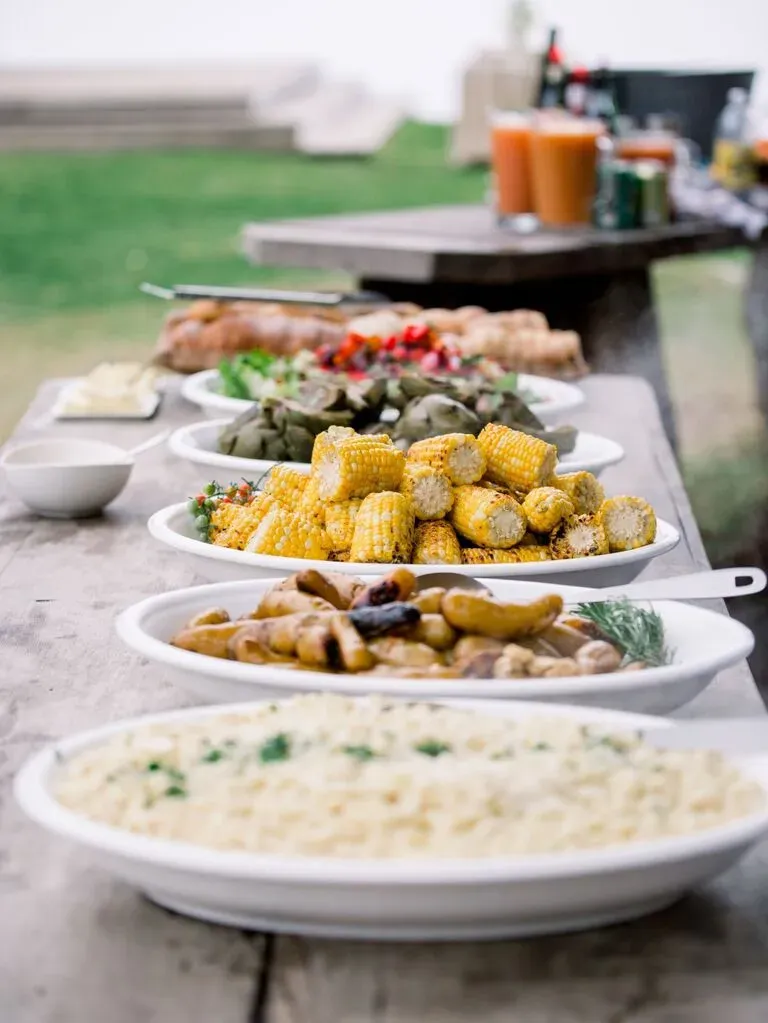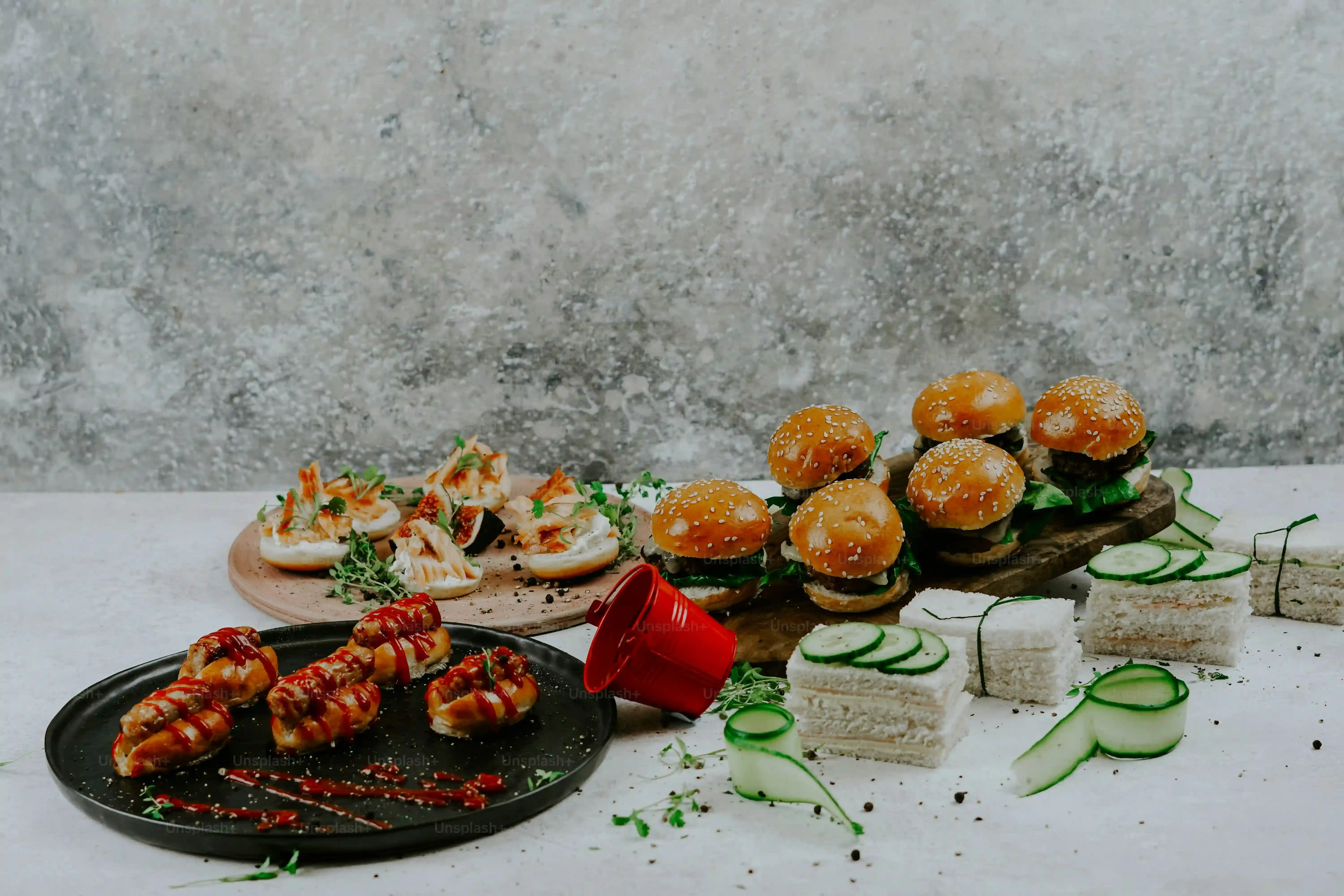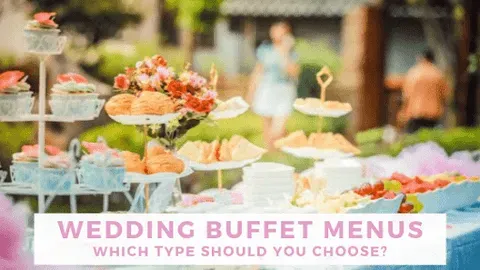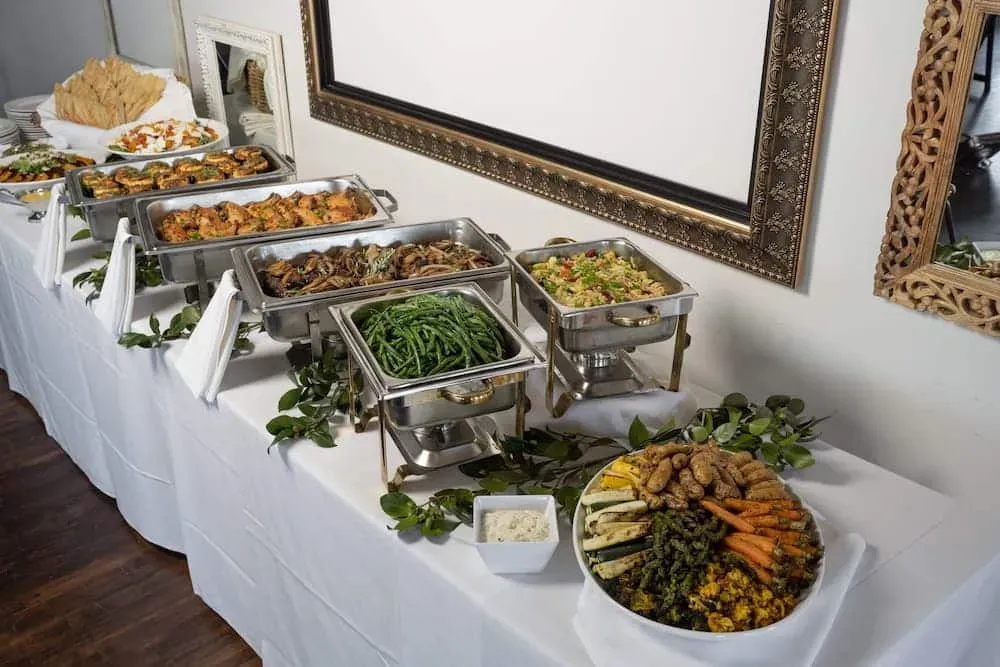Table of Contents
Planning the food for your wedding can feel like a monumental task. You want something that everyone will love, something that feels special, but maybe also something that feels comfortably familiar. That's where the idea of a traditional wedding buffet menu often comes in. It’s a classic choice for a reason – it offers variety, allows guests to pick and choose their favorites, and can create a relaxed, communal dining experience. But what exactly makes a buffet "traditional"? And how do you ensure yours hits all the right notes without feeling boring or dated?
What Defines a Traditional Wedding Buffet Menu?

What Defines a Traditional Wedding Buffet Menu?
More Than Just Trays of Food
So, you're thinking about a traditional wedding buffet menu. Great choice! It’s a classic for a reason. But what exactly sets it apart from, say, a stations layout or family style? It's not just about having guests serve themselves. A traditional wedding buffet menu often implies a certain level of variety and approachability.
Think of it as a curated spread where guests can mingle, chat, and build their own plate. It’s less formal than a plated dinner, encouraging movement and interaction. It’s about offering choices – meat, fish, vegetarian options, a couple of sides, maybe a salad. The key is providing enough diversity to satisfy different palates without overwhelming people.
The Core Elements of a Traditional Spread
When someone mentions a traditional wedding buffet menu, certain images probably come to mind. You're likely picturing carving stations with roast beef or turkey, maybe a salmon dish, some classic vegetable sides like green beans or roasted potatoes, and a couple of different salads. Pasta is often in the mix too, because who doesn't love pasta? It's comfort food on a slightly larger scale.
This style leans into familiar flavors and dishes that have stood the test of time at gatherings. It’s designed to appeal to a broad range of guests, from your picky cousin to your adventurous uncle. The focus is on solid, reliable options that everyone can recognize and enjoy, often with a nod to regional or family favorites thrown in.
What often shows up on a traditional buffet:
- Roast Meat (Beef, Turkey, Ham)
- Poultry Dish (Chicken, often roasted or baked)
- Fish or Seafood Option
- Pasta Dish
- Two to three Vegetable Sides
- Two to three Starch Sides (Potatoes, Rice, Rolls)
- Mixed Green Salad or Caesar Salad
- Another Cold Salad (e.g., Pasta Salad, Coleslaw)
Balancing Familiarity and Flair
Just because it's traditional doesn't mean it has to be boring. The beauty of a traditional wedding buffet menu is that you can take those classic components and elevate them. Maybe instead of plain roasted chicken, you offer chicken with a lemon-herb sauce. Those green beans? Toss them with toasted almonds and a touch of garlic. You can use quality ingredients and skilled preparation to make even the most familiar dishes feel special.
It’s about hitting that sweet spot between what guests expect and adding your own personal touch. This style is incredibly flexible. You can weave in elements that reflect your heritage, favorite foods, or even your first date meal. It’s the foundation you build upon to create a dining experience that feels both classic and uniquely yours.
Essential Dishes for Your Traditional Wedding Buffet Menu

Essential Dishes for Your Traditional Wedding Buffet Menu
Must-Haves for a Crowd-Pleasing Spread
Alright, let's talk turkey. Or roast beef. Or salmon. When you're mapping out your traditional wedding buffet menu, there are some dishes that are just non-negotiable for many guests. These are the heavy hitters, the ones people load up on first. You're looking at a mix of proteins – typically at least one red meat, one poultry, and a fish option. This covers your bases and gives people choices, which is the whole point of a buffet, right? Don't skimp on quality here; a dry chicken breast can ruin someone's entire dining experience, and nobody wants to be *that* wedding.
What are the usual suspects you'll see (and probably want) on a traditional wedding buffet menu?
- Carved Roast Beef with Au Jus or Gravy
- Roasted or Baked Chicken (often with herbs or a simple sauce)
- Salmon (baked, grilled, or poached)
- Perhaps a Pork Loin or Ham
- A Vegetarian Main (important! Think pasta primavera or a hearty vegetable gratin)
Planning Your Traditional Wedding Buffet Menu Logistics

Planning Your Traditional Wedding Buffet Menu Logistics
Getting the Numbers Right: How Much Food is Enough?
you've picked the delicious dishes for your traditional wedding buffet menu. Now comes the slightly less glamorous part: figuring out how much of it you actually need. This isn't like ordering for a sit-down dinner where it's one plate per person. With a buffet, people tend to take a little more of what they love and maybe just sample the rest. Your caterer is your best friend here, but it helps to have a general idea. Running out of the most popular item is a wedding disaster you want to avoid at all costs. Conversely, having mountains of leftovers isn't exactly ideal either.
Estimating portions for a buffet involves a bit of educated guesswork and relying on your caterer's experience. They usually calculate slightly higher quantities per person than they would for a plated meal. Think about the types of guests you have – are they big eaters? Will there be a lot of kids? The time of day matters too; a lunch buffet might require less food than a dinner spread. Always, always err on the side of slightly too much rather than not enough. Nobody wants to be the guest who gets the last sad scoop of mashed potatoes.
Setting the Scene: Buffet Flow and Setup
The physical layout of your traditional wedding buffet menu is crucial for preventing bottlenecks and keeping the line moving smoothly. Imagine 150 hungry guests descending on a single table from one end. Chaos. You need to think about flow. Where do people get their plates? Where do they start? Where do they end up? Placing salads and lighter fare at the beginning makes sense, followed by the main proteins, then the sides, and finally, rolls and condiments.
Consider using double-sided buffets if space allows, or even having multiple smaller buffet stations to split the crowd. Drinks and desserts should ideally be in a separate area entirely. This isn't just about efficiency; a well-organized buffet looks more appealing and contributes to a relaxed vibe. Nobody enjoys shuffling awkwardly in a long, slow line while their stomach rumbles.
- Place plates at the very start of the line.
- Position salads and cold items first.
- Follow with starches and vegetables.
- Put protein options towards the end of the main line.
- Locate rolls and condiments after the hot items.
- Set up drinks and desserts in a separate area to reduce congestion.
- Consider two identical lines for larger guest counts.
Elevating the Traditional Wedding Buffet Menu Experience

Elevating the Traditional Wedding Buffet Menu Experience
Adding Flair to Familiar Favorites
so you've got the foundational elements for your traditional wedding buffet menu. Roast beef? Check. Chicken? Got it. But how do you make it feel less like a corporate lunch and more like a celebratory feast? It’s all in the details and the execution. Think about upgrading ingredients – maybe using locally sourced produce for your salads or a higher quality cut of meat for the carving station. Sauces are your secret weapon; a gourmet mushroom gravy or a vibrant chimichurri can transform a simple protein.
Consider offering a few slightly more adventurous, yet still approachable, options alongside the classics. Maybe a spicy shrimp dish or mini quiches with interesting fillings. It shows you've put thought into it without alienating guests who prefer the tried-and-true. It's about taking those familiar flavors and giving them a little wink and a nudge towards something more memorable.
How can you make standard dishes stand out?
- Use fresh herbs generously.
- Offer multiple sauce options for proteins.
- Incorporate interesting textures (e.g., toasted nuts on vegetables).
- Add a gourmet twist to a classic side (truffle mashed potatoes, anyone?).
- Ensure vegetarian options are substantial and flavorful, not an afterthought.
Beyond the Plate: Presentation and Personal Touches
Elevating your traditional wedding buffet menu isn't just about the food itself; it's also about how it's presented. Soggy trays of lukewarm food are a definite buzzkill. Work with your caterer on making the display visually appealing. Use varying heights, interesting platters, and perhaps some decorative elements like fresh herbs or edible flowers. Good lighting matters too – make the food look as delicious as it tastes.
Think about incorporating elements that reflect your wedding theme or personal story into the buffet area. Maybe display photos of your relationship, use signage with fun facts about the dishes (like "Grandma Carol's famous potato salad!"), or have a signature cocktail station nearby. These small touches create a more immersive experience and make the traditional wedding buffet menu feel less generic and more *yours*. It's about creating an atmosphere, not just serving dinner.
What presentation elements can upgrade the buffet?
- Stylish serving dishes and risers.
- Clear, attractive labels for each dish, noting allergens.
- Fresh garnishes and decor on the buffet table.
- Themed elements that match your wedding decor.
- Attentive staff to keep the area clean and replenished.
Traditional Wedding Buffet Menu FAQs

Traditional Wedding Buffet Menu FAQs
Your Burning Questions Answered
so you've got the basic idea for your traditional wedding buffet menu down, but inevitably, questions pop up. How do you handle guests with allergies? Is it cheaper than plated? What about dessert? These are the real-world snags that can make planning feel less like a dream and more like a logistical nightmare. Let's tackle some of the most common inquiries that come up when couples opt for this style of service. Getting these details sorted early can save you a lot of stress down the line and ensure your buffet runs smoothly, keeping everyone happy and well-fed without any unwelcome surprises.
Common questions about a traditional wedding buffet menu often include:
- How do I accommodate dietary restrictions (vegetarian, vegan, gluten-free, allergies)?
- What's the typical cost comparison between a buffet and plated service?
- How many serving lines do I need for my guest count?
- Should dessert be part of the buffet or separate?
- What's the best way to label dishes, especially for allergens?
Wrapping Up Your Traditional Feast
Putting together a traditional wedding buffet menu doesn't have to mean settling for bland or expected. It's about understanding the core elements that make this style work – variety, comfort, and ease for your guests – and then adding your own flavor. You've got the rundown on the must-have dishes and some thoughts on navigating the practicalities. Ultimately, a successful buffet is less about reinventing the wheel and more about executing the classics well, ensuring everyone gets fed without the fuss. Now, go forth and plan a spread that actually gets eaten.